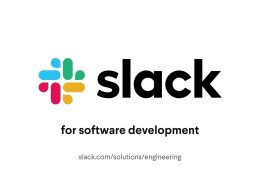Ireland’s retirement landscape is set for a seismic shift with the introduction of auto-enrolment in 2026, a government initiative aimed at encouraging more workers to save for their retirement. While the State Pension provides a baseline, studies consistently show that many Irish workers are underprepared for retirement, with significant gaps in personal pension savings. Auto-enrolment is designed to address this challenge, making retirement planning automatic for employees while providing guidance and responsibilities for employers.
As a financial expert, I see this as both an opportunity and a responsibility. Being ready — whether you are an employee or an employer — will make the transition smoother and ensure everyone can take full advantage of the benefits.
What Is Auto-Enrolment?
Auto-enrolment is a system where employees are automatically enrolled into a pension scheme by their employer. Contributions are deducted from wages and invested in a pension fund, with employees having the choice to opt out if they wish. The goal is to simplify pension participation, remove barriers to saving, and build a more secure retirement culture in Ireland.
The system is being introduced gradually, with initial participation targeted at workers aged 23–60, earning above a minimum income threshold. Contribution rates will start modestly but are expected to increase over time to ensure meaningful retirement savings.
Why Auto-Enrolment Matters
Ireland has one of the lowest private pension participation rates in Europe. While the State Pension provides a basic income of approximately €277 per week, this is unlikely to fund a comfortable retirement. Auto-enrolment addresses this by:
- Increasing pension coverage: Automatically enrolling employees ensures more workers start saving early.
- Encouraging consistent contributions: Regular payroll deductions instil disciplined saving habits.
- Reducing long-term reliance on the State Pension: Supplemental personal pensions give individuals more financial freedom in retirement.
For employees and employers alike, early preparation is key to maximising the benefits of this system.
What Auto-Enrolment Means for Employees
If you are an employee in Ireland, auto-enrolment will change the way you save for retirement, but the good news is that it’s designed to be simple and largely automatic. Here’s what you need to know:
1. You Will Be Automatically Enrolled
From 2026 onwards, eligible employees will be enrolled in a pension scheme through their workplace. Contributions will be deducted directly from wages, making the process seamless.
2. You Can Opt Out, But It’s Worth Staying In
Employees retain the right to opt out if they choose. However, staying enrolled allows you to benefit from long-term savings growth, employer contributions, and tax relief. Opting out means potentially missing decades of compounding growth.
3. Contributions Are Shared
Most schemes will include contributions from both the employee and employer, often with tax relief applied to employee contributions. This means that even modest deductions from your pay can grow significantly over time, with employer contributions effectively acting as free money for your retirement.
4. Understanding Your Pension Pot
Auto-enrolment schemes are designed to be low-cost and easy to manage. Employees should familiarise themselves with the investment options, contribution rates, and expected outcomes of their pension. Using tools like a pension calculator can help you estimate your retirement savings under different contribution scenarios.
5. Planning Ahead
Even with auto-enrolment, it’s wise to review your personal retirement goals. Auto-enrolment provides a foundation, but additional contributions or personal pension plans may be necessary to meet lifestyle ambitions in retirement.
What Auto-Enrolment Means for Employers
Employers have a vital role in implementing auto-enrolment successfully. Compliance is not just a legal requirement; it also contributes to workforce satisfaction and long-term financial security for employees. Key steps for employers include:
1. Registering for a Pension Scheme
Employers must select and register an approved pension scheme that meets government standards. Choosing a scheme that is easy to administer and cost-effective for employees is crucial.
2. Payroll Integration
Contributions must be deducted from employee salaries accurately and submitted to the pension provider. Ensuring your payroll systems are ready to handle automatic deductions is essential.
3. Employee Communication
Employees need clear information on what auto-enrolment means, how contributions work, and their rights to opt out. Transparent communication fosters trust and encourages participation.
4. Compliance and Record-Keeping
Employers are responsible for ongoing compliance with auto-enrolment regulations. This includes maintaining accurate records, submitting contributions on time, and providing employees with annual statements showing their pension pot growth.
5. Planning for Staging Dates
Auto-enrolment will be introduced gradually, with staging dates based on company size. Employers must plan well in advance to ensure systems, staff training, and communications are in place before their specific start date.
Preparing for Auto-Enrolment
Whether you are an employee or an employer, early preparation is key.
For Employees:
- Familiarise yourself with your upcoming scheme and contribution rates.
- Use a pension calculator to understand potential retirement outcomes.
- Consider whether additional voluntary contributions are necessary to meet your retirement goals.
For Employers:
- Review current pension offerings and identify suitable schemes for auto-enrolment.
- Upgrade payroll systems if necessary to handle automatic deductions.
- Develop clear communication materials and training for HR staff.
- Plan for compliance reporting and record-keeping processes.
The Long-Term Impact
Auto-enrolment represents a major step forward for retirement security in Ireland. By making pension saving automatic and accessible, the government aims to reduce the retirement savings gap and help employees retire with confidence. For employers, successfully implementing auto-enrolment strengthens employee trust, improves benefits packages, and supports a culture of financial well-being in the workplace.
Ultimately, auto-enrolment is about creating a sustainable, long-term approach to retirement. Those who prepare now, both employees and employers, will enjoy smoother transitions, less financial stress, and a clearer path to a secure retirement.
Final Thoughts
The 2026 introduction of auto-enrolment in Ireland is more than just a regulatory change; it is a financial revolution for workers and businesses alike. For employees, it offers an effortless way to build a retirement fund with the added bonus of employer contributions and tax relief. For employers, it is an opportunity to enhance employee benefits while fulfilling a vital legal and social responsibility.
Early engagement, education, and preparation are the keys to success. By understanding what auto-enrolment entails and taking proactive steps now, both employees and employers can ensure that 2026 marks not the start of uncertainty, but the beginning of a more secure financial future for everyone in the workforce.










